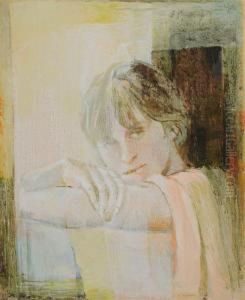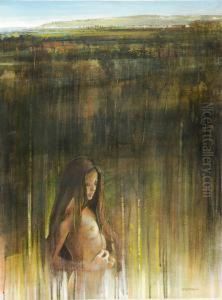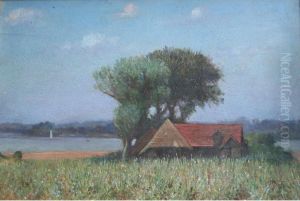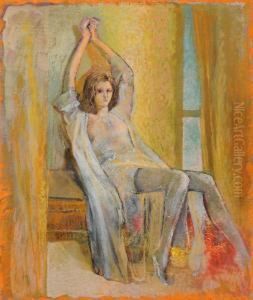Gaetano Meo Paintings
Gaetano Meo was an Italian artist, known for his contributions as both a painter and a mosaicist. Born in 1850 in the small town of Grassano in the Southern Italian region of Basilicata, Meo's artistic journey began in an era marked by significant social and political upheaval in Italy. Despite the challenges of his early life, including limited access to formal artistic education in his rural upbringing, Meo's innate talent and determination propelled him into the broader art scene of Italy and beyond.
In his early years, Meo was deeply influenced by the natural beauty of the Italian landscape, as well as the rich historical and cultural heritage of his homeland. These elements became recurring themes in his work. Seeking to expand his artistic knowledge and skills, Meo moved to Rome, a hub for artists seeking inspiration and patronage during the late 19th century. It was here that he honed his craft, exploring various artistic mediums but eventually finding his calling in the art of mosaic.
Meo's mosaics are characterized by their vibrant colors, intricate details, and the seamless way they blend traditional techniques with innovative designs. His work gained recognition for its artistic merit and technical proficiency, leading to commissions for both religious and secular subjects. Notably, Meo played a significant role in the decoration of the Westminster Cathedral in London, a testament to his expertise and the international scope of his career.
Despite his success, Meo remained deeply connected to his Italian roots, often returning to his native Basilicata to draw inspiration from its landscapes and people. His contribution to the arts extends beyond his own creations; he was also a mentor to younger artists, sharing his knowledge and passion for mosaic artistry.
Gaetano Meo's legacy is not just in the beauty of his mosaics but also in his journey from a small Italian town to international acclaim, embodying the spirit of perseverance and the enduring appeal of Italian art. He passed away in 1925, leaving behind a body of work that continues to inspire admiration and respect for its artistic excellence and cultural significance.



